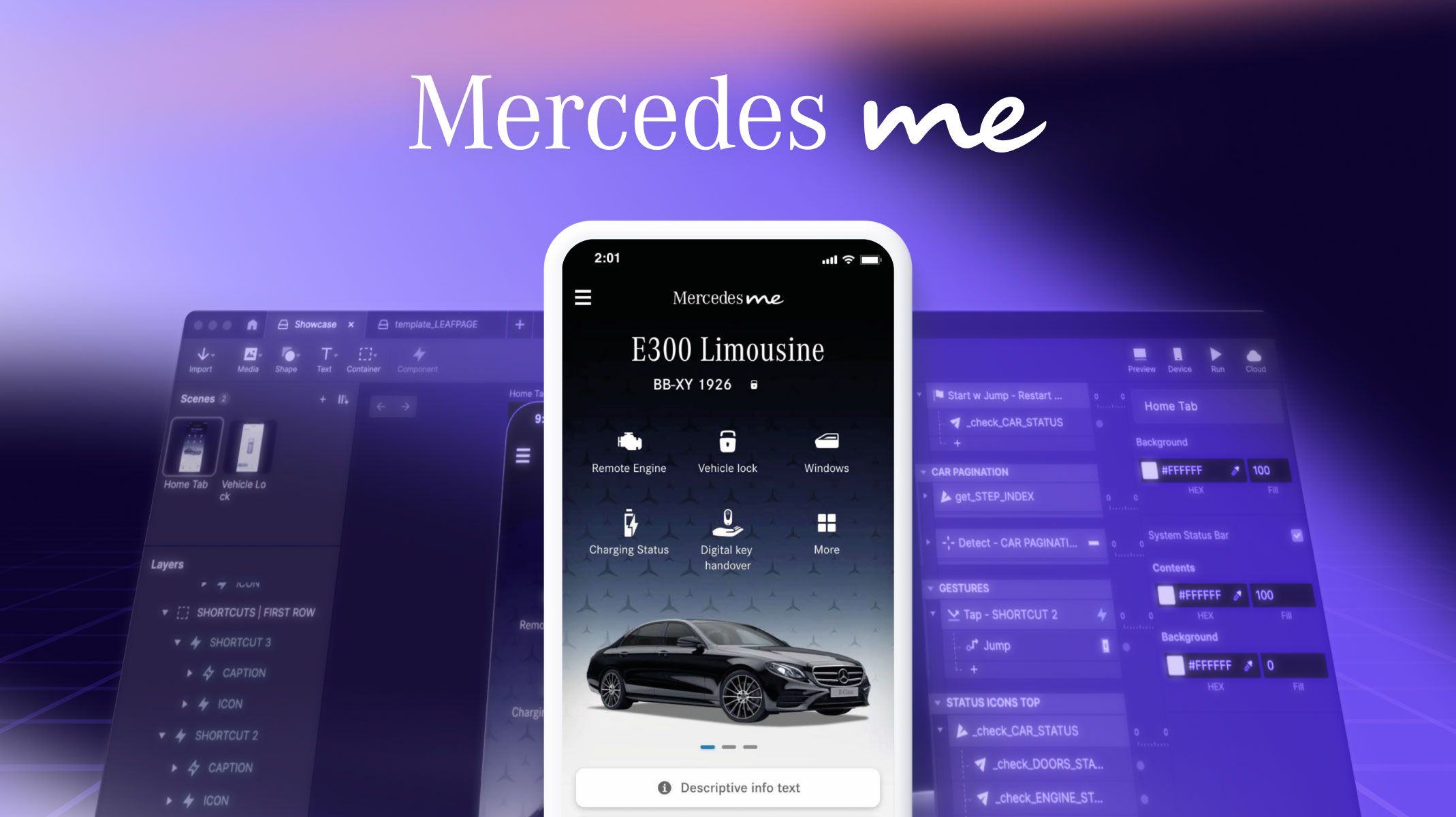Granstudio Transforms Automotive HMI with XR Prototyping
Learn how Granstudio, a pioneer in automotive design, uses ProtoPie for HMI & XR prototyping.

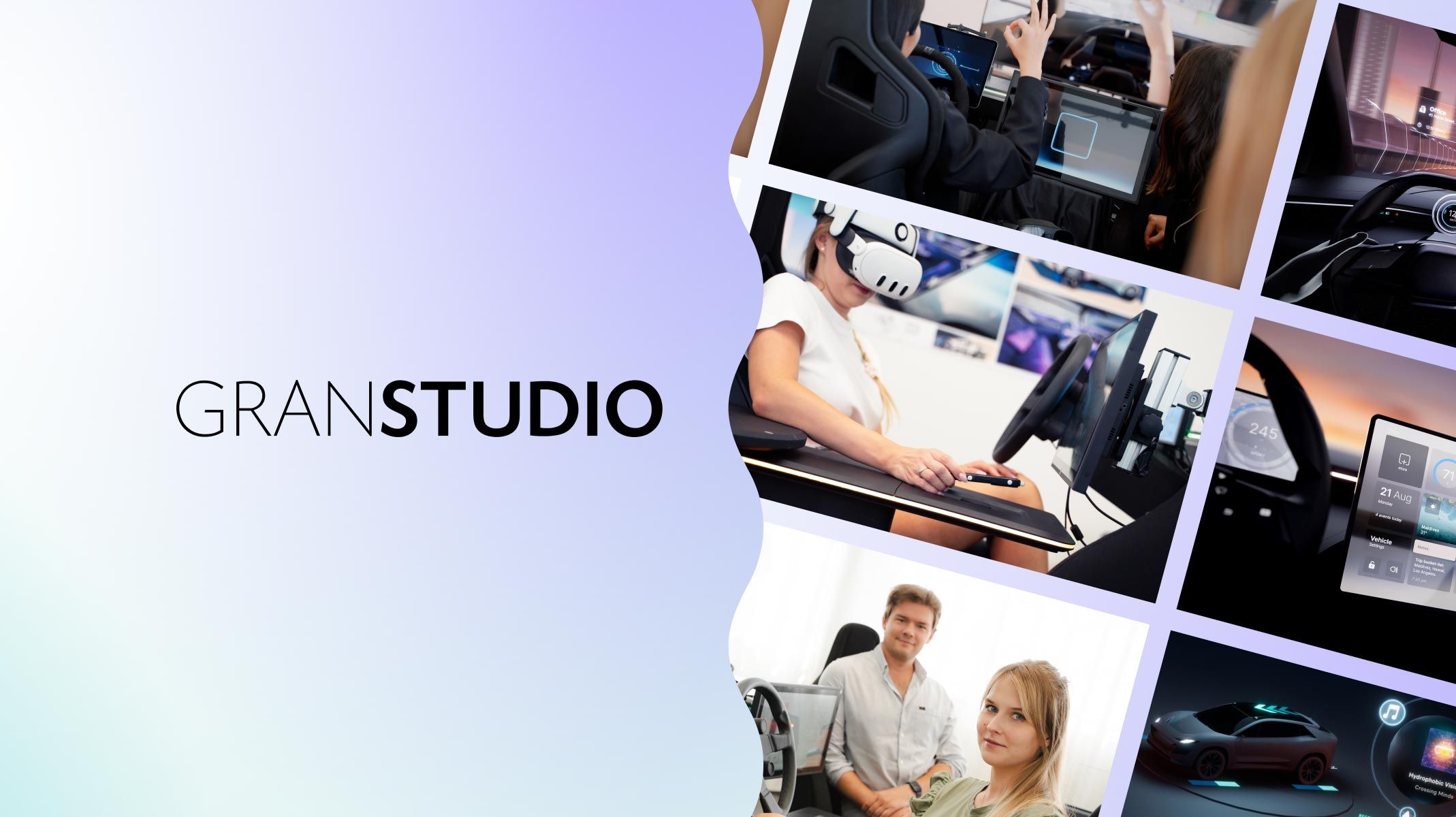.jpg)
Overview
- Granstudio’s approach to HMI design: Blending physical and digital expertise
- Granstudio's HMI workflow
- How Granstudio uses ProtoPie
- Designing complete cabin experiences
- Q&A
- Innovating the future of HMI design with ProtoPie
In today’s rapidly evolving automotive landscape, the demand for seamless human-machine interface (HMI) experiences has never been more pressing. Granstudio, an international creative consultancy headquartered in Italy, is at the forefront of this revolution, harnessing the power of XR (extended reality) prototyping to create intuitive and cutting-edge automotive designs.
Granstudio’s HMI Team members Lukasz Czekanowski, Granstudio Junior Partner, and Klaudia Warmus, Software Developer & Project Team Member, shared Granstudio’s insights during our livestream on “Transforming HMI: XR Prototyping to Design Complete & Seamless Car Experiences.”
This article takes an in-depth look at Granstudio’s approach to HMI design, the tools it utilizes, how ProtoPie fits into its whole process, and how Granstudio’s team's innovative methods are reshaping the future of automotive experiences.

Granstudio: A pioneer in automotive design
Granstudio is a diverse team of over 65 experts spanning multiple disciplines in mobility design. Located in the heart of the Italian automotive industry, with an additional branch in Belgium, the company combines physical and digital expertise to offer comprehensive design solutions. Their projects range from designing cars and trucks to more forward-thinking mobility concepts, all driven by their commitment to creating human-centric, context-aware experiences.
In the livestream, Lukasz highlighted the breadth of Granstudio’s design spectrum, emphasizing the seamless integration of physical and digital design elements in their workflow. Granstudio’s unique transdisciplinary approach allows them to connect different aspects of mobility design, offering a holistic experience that goes beyond traditional automotive design boundaries.

Granstudio’s approach to HMI design: Blending physical and digital expertise
Granstudio has a unique approach to creating seamless and intuitive Human-Machine Interaction (HMI). Their work is structured around three main design disciplines centered on a design-driven methodology:
- Automotive
- Mobility
- Interaction
This layered process allows the design team to simulate, test, and refine interactions, ensuring that the HMI aligns perfectly with the vehicle’s overall design.

Crafting multi-dimensional car experiences
At the heart of Granstudio's interaction design process is a transdisciplinary approach that allows them to create multi-dimensional car experiences. Their UX-driven methodology covers the entire design process, from initial user research to the final stages of development, adapting to the specific needs of each project. This flexibility enables them to deliver HMI systems that are functional and unique, ensuring that each project stands out in its own right.
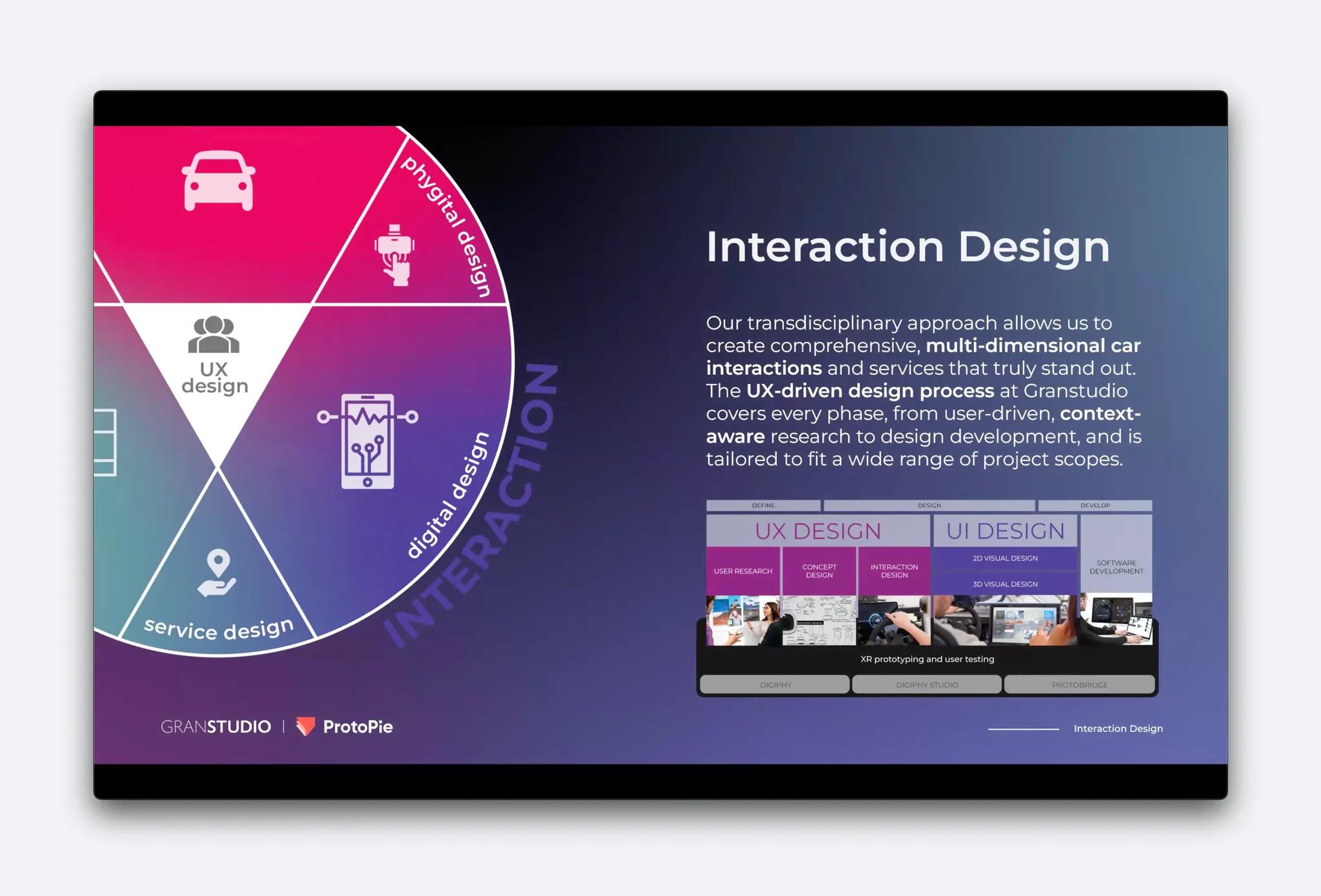
Blending physical and digital expertise
One of Granstudio’s key strengths lies in their ability to merge physical and digital expertise, also known as the ‘phygital’ approach. This is especially evident in their prototyping process, combining physical prototypes with digital tools to create a comprehensive design experience. Although digital methods have not always been the go-to in automotive design, Granstudio is reimagining these techniques to fit their needs, particularly in prototyping.
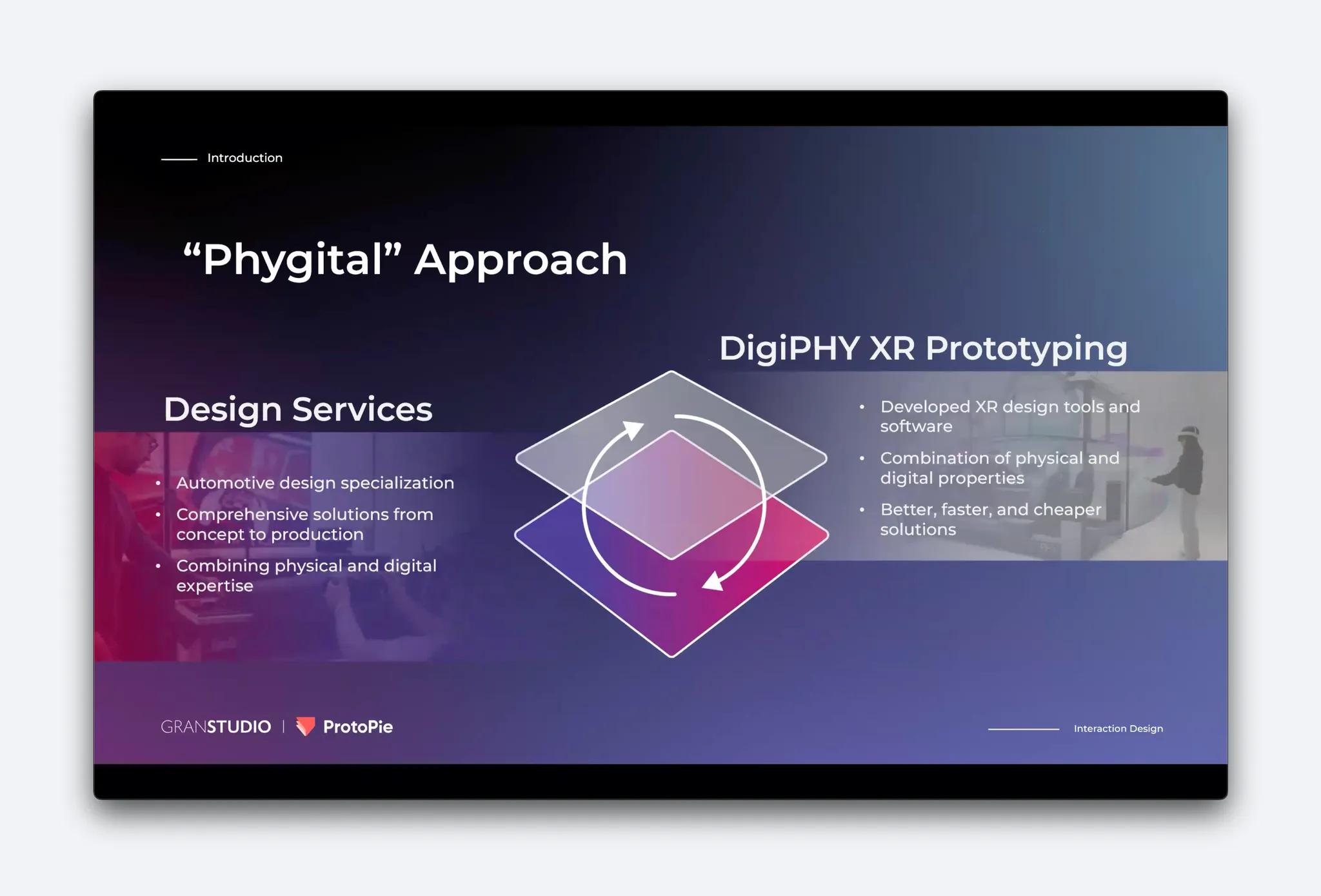
DigiPHY: The flagship mixed reality tool
One of the standout innovations Granstudio has developed is their proprietary mixed reality tool, DigiPHY. Powered by over 25 different engines, DigiPHY integrates physical and digital elements into an immersive design platform, capable of adapting to any vehicle layout—from cars and buses to trucks and agricultural vehicles.
According to Lukasz, DigiPHY provides an unparalleled foundation for testing high-resolution prototypes, aligning virtual simulations with physical models. The tool allows designers to experience and interact with a digital representation of the vehicle in real time, providing instant feedback on design elements.
This fusion of digital and physical design is a key differentiator for Granstudio. It allows their team to explore the full potential of HMI design, blending the best of both worlds to create seamless, context-aware experiences for drivers and passengers alike.
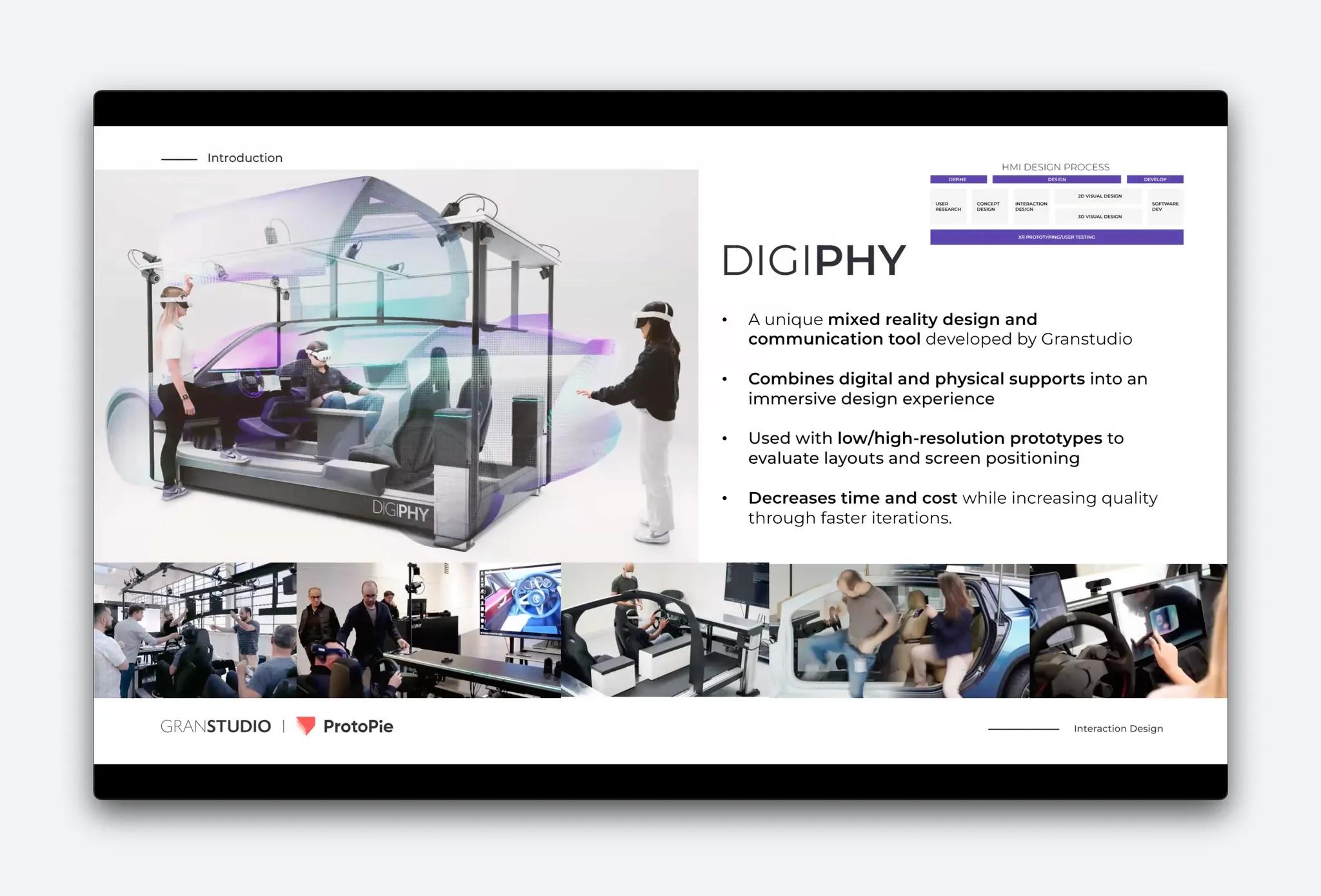
Granstudio's HMI workflow
Granstudio's HMI workflow is built on three main components: physical prototypes, interactive VR, and digital prototypes. ProtoPie plays a significant role in the digital prototyping stage, allowing the team to refine user interactions and test behaviors in a real-time environment.

1. Physical prototypes and ergonomics
Physical prototypes are used to simulate and verify ergonomics, ensuring that every interaction feels natural. ProtoPie aids in this by supporting real-time interactions, so Granstudio can create prototypes that closely mimic the final experience. This allows them to assess key user interface sections, including material configurations, embedded lighting, and overall feel, ensuring that digital design aligns with physical elements.
2. Interactive VR for context-aware design
Interactive VR is essential for evaluating the user experience in various contexts. With ProtoPie, Granstudio can simulate how users interact with HMI systems in different scenarios, such as traffic conditions, weather changes, or different times of the day. This context-aware design approach ensures that Granstudio’s prototypes are robust, flexible, and tested in various environments.
3. Digital prototyping and dynamic interactions
ProtoPie truly shines when it comes to digital prototyping. Granstudio uses ProtoPie to build adaptive, responsive interfaces that adjust to various user inputs and settings. For instance, ProtoPie allows them to design interactions that adjust based on the active user profile, making the experience more personalized and reducing potential distractions for drivers. This flexibility is key in their HMI design process, ensuring their prototypes are dynamic and user-friendly.
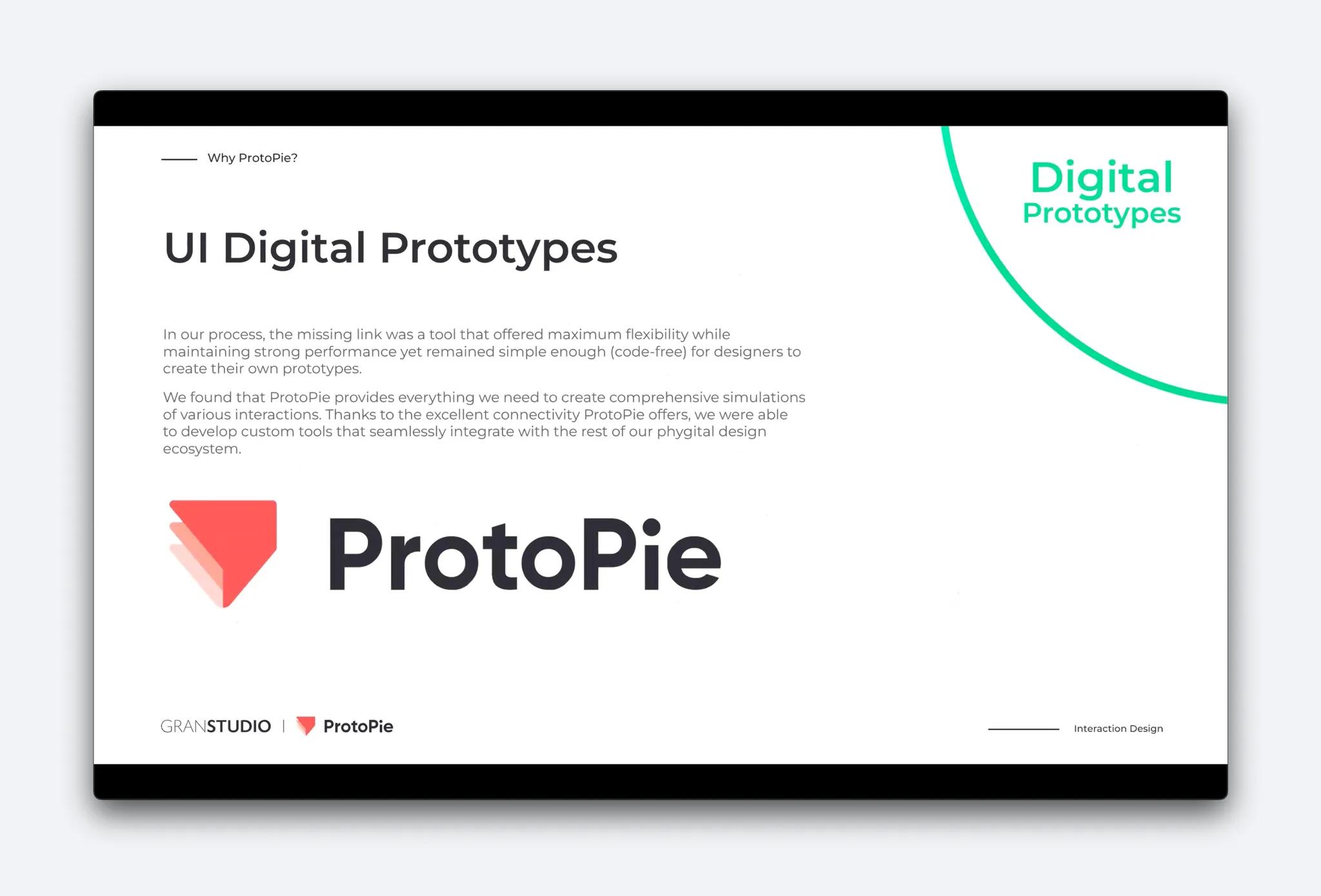
How Granstudio uses ProtoPie
ProtoPie provides several features that have transformed Granstudio’s design workflow, making it more efficient and powerful.
1. Triggers and responses for interaction design
Triggers and responses are two of the most frequently used functions in ProtoPie. They allow the team to create interactive elements easily, simulating how users interact with the interface.
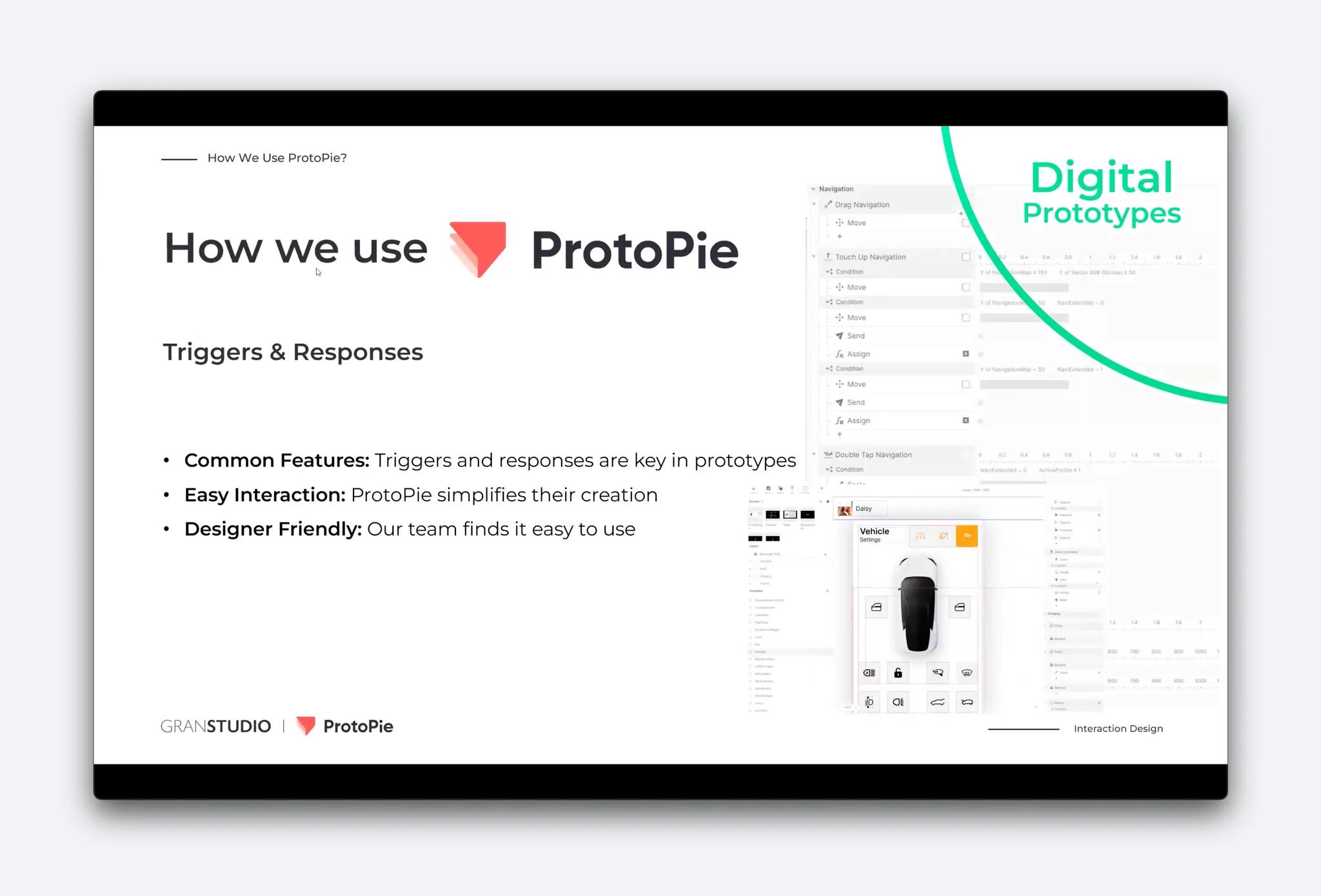
2. Formulas and variables for enhanced realism
Formulas and variables, on the other hand, allow Granstudio to track and adapt to real-time data. These features make it possible to create dynamic prototypes that adapt to users' needs and behaviors, ensuring that the HMI design is intuitive and functional.
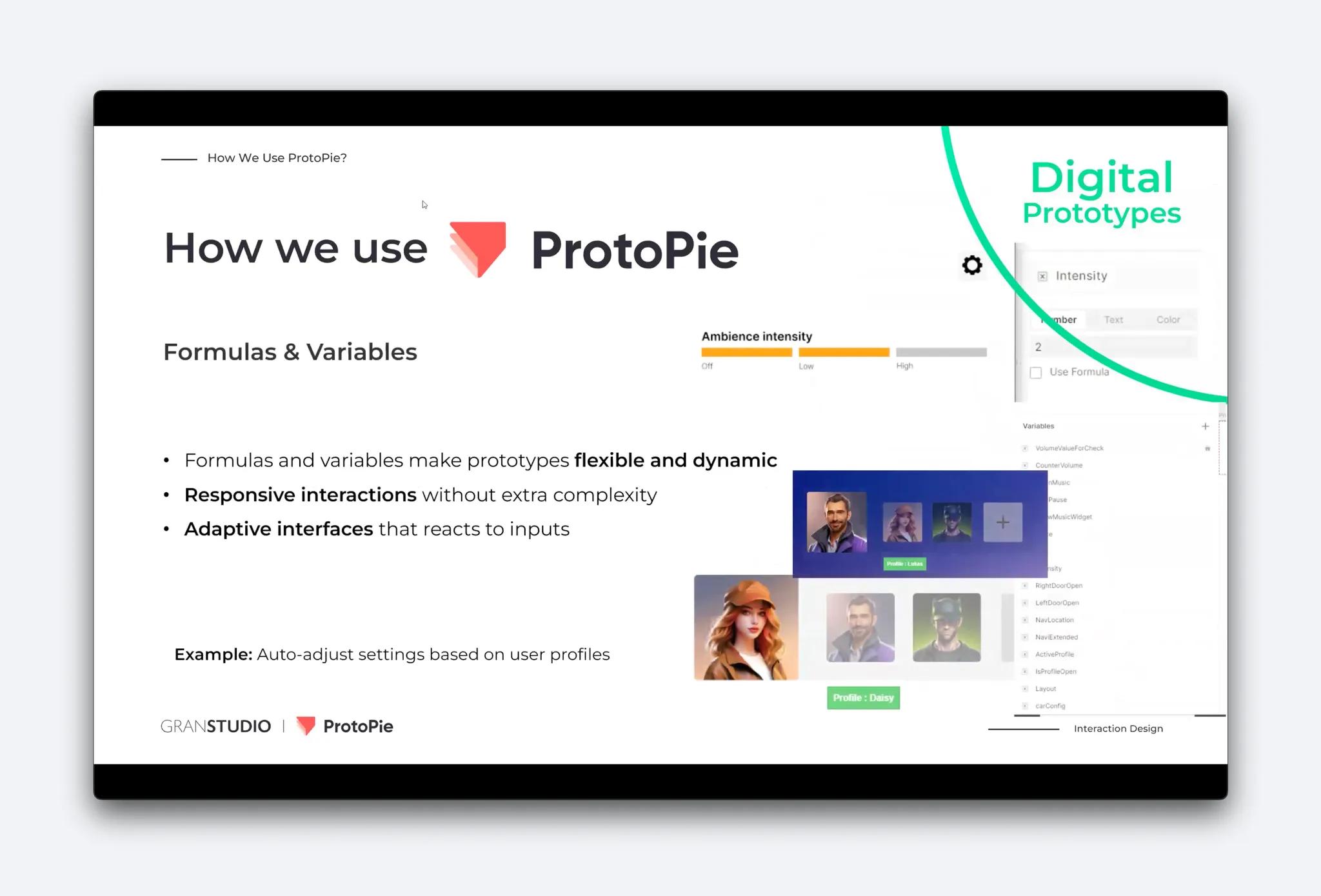
3. Integration of voice commands
As voice technology becomes more critical in modern vehicles, ProtoPie allows Granstudio to simulate voice commands in their prototypes. This feature is essential for testing hands-free interactions, helping to improve both driver safety and convenience. The ability to prototype voice interactions gives Granstudio a valuable edge in designing forward-thinking HMI systems.

4. ProtoPie Cloud for sharing & collaboration
ProtoPie’s cloud-based features make collaboration seamless within the Granstudio team. Using ProtoPie Cloud, they can share prototypes effortlessly, gather feedback in real time, and ensure alignment across various stakeholders. The team can quickly iterate on feedback, improving the overall workflow speed and efficiency.
5. ProtoPie Player for on-device testing
Another key tool is ProtoPie Player, which allows the team to test prototypes on actual devices without extensive hardware. They can check the feel of interactions, adjust timing and animations, and ensure that everything runs smoothly across various devices. This functionality is especially useful when Granstudio connects multiple screens or integrates physical components, ensuring every element syncs.
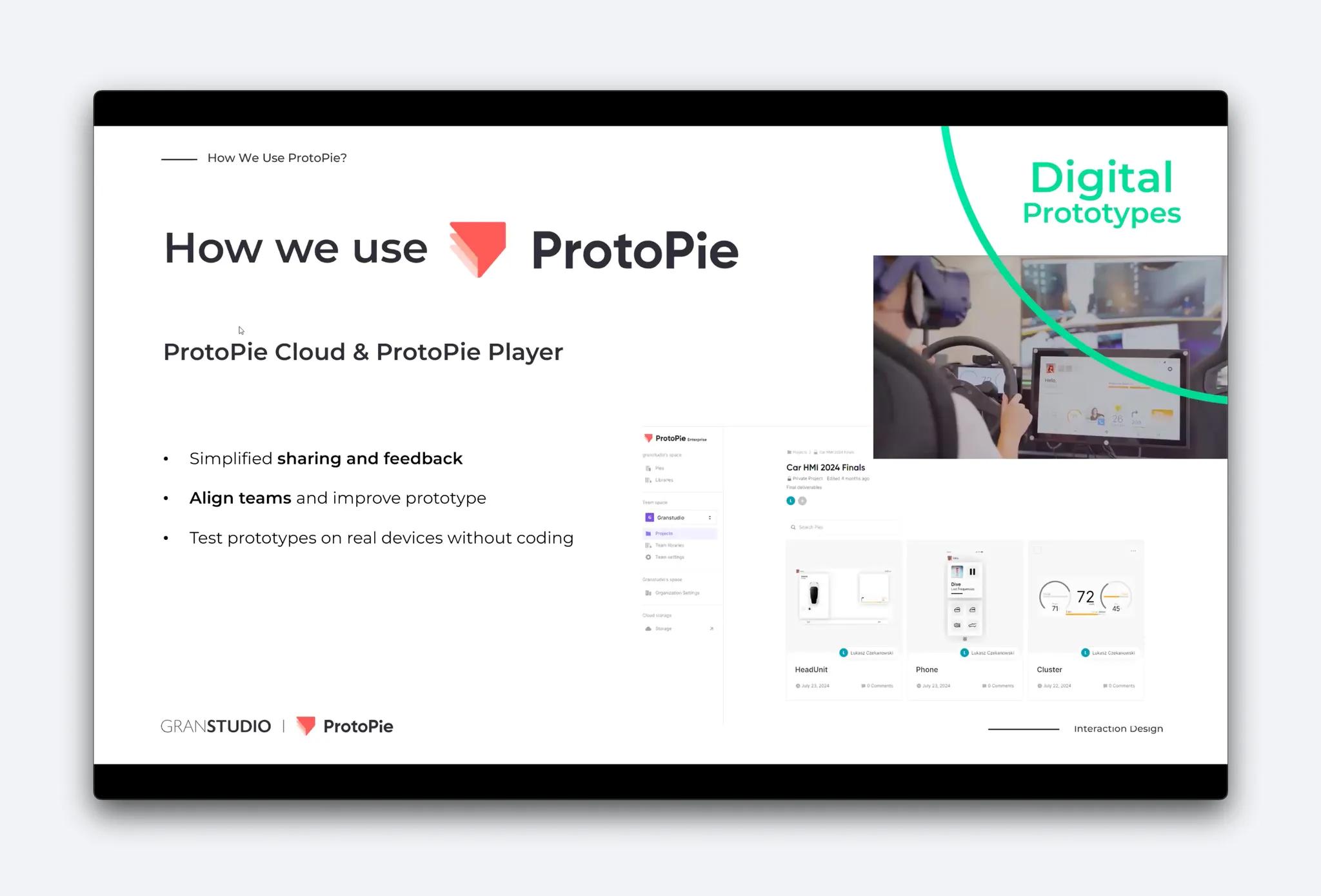
6. ProtoPie Connect for integration with external devices
ProtoPie’s ability to connect with external devices is another crucial feature for Granstudio. ProtoPie Connect allows the team to integrate microcontrollers and other hardware components into their prototypes, testing physical interactions alongside digital interfaces. This enables them to simulate real-world conditions and ensure their prototypes accurately represent how users interact with the vehicle's systems.
For example, Granstudio can use ProtoPie to move widgets between the dashboard’s display and other in-car screens, ensuring that all devices are synchronized. This level of connectivity and testing allows the team to simulate real-world interactions and refine the HMI design in a comprehensive, integrated environment.
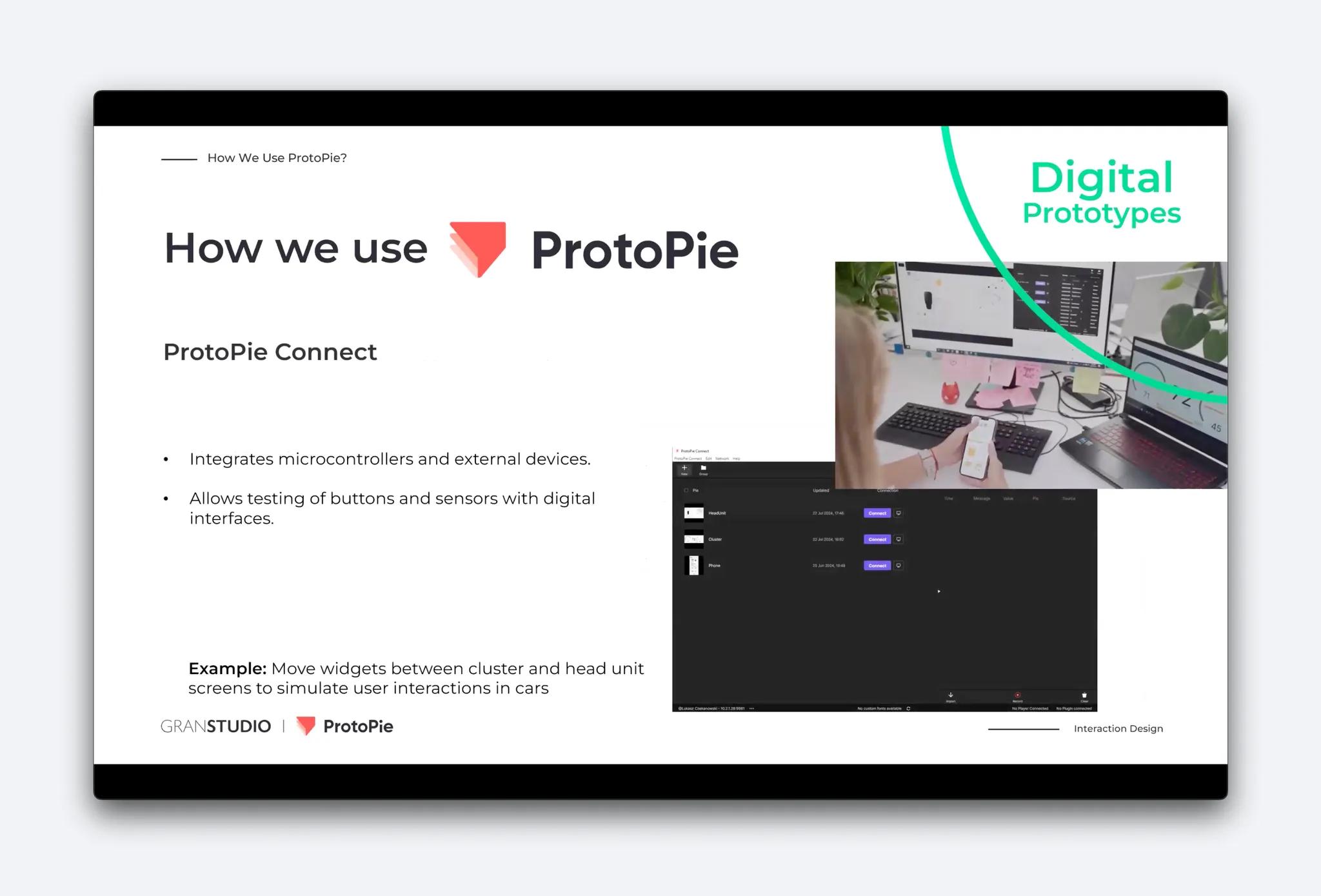
Designing complete cabin experiences
Granstudio’s HMI design process blends physical and digital tools to enable real-time testing and refinement. Tools like ProtoPie, DigiPHY, and interactive VR simulations are central to this workflow, allowing the team to iterate at every stage of the design process.
ProtoPie plays a key role in prototyping and refining HMI designs. It provides the flexibility and efficiency to create seamless, intuitive user experiences while enabling real-time testing and interaction.
ProtoPie also allows Granstudio’s team to work seamlessly across various tools like Adobe After Effects, Figma, and Unreal Engine. This adaptability makes ProtoPie an essential part of Granstudio’s toolkit, enabling the team to quickly transition from concept to prototype.
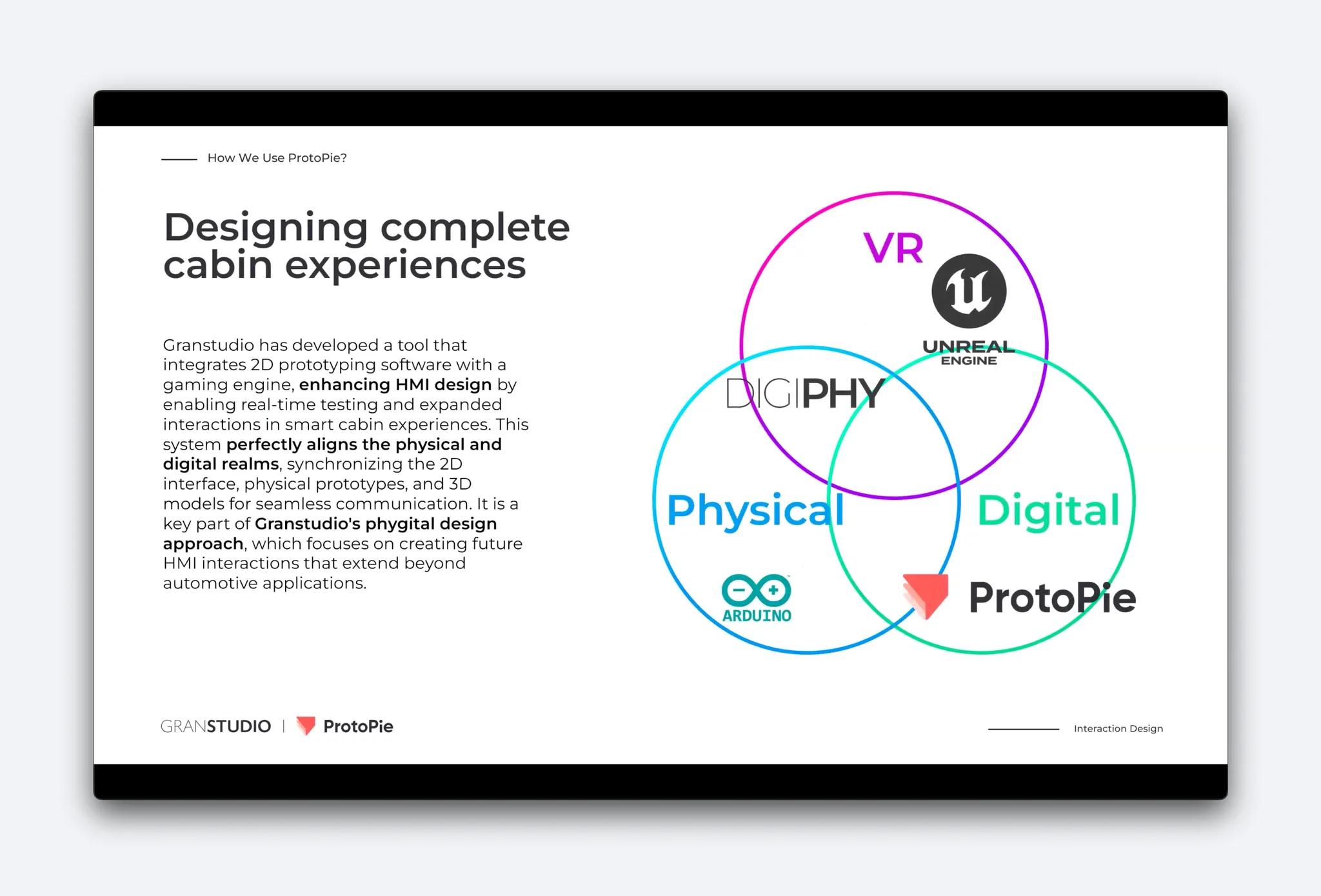
Granstudio’s approach to HMI design blends physical and digital elements to push the boundaries of automotive innovation. Using tools like ProtoPie and XR prototyping, they create intuitive, context-aware interfaces that balance functionality and aesthetics.
By focusing on user-centered design and constantly refining their process, Granstudio consistently delivers HMI systems that enhance the driving experience, making it more immersive and intuitive for both drivers and passengers.
Q&A
Q: Can you talk about the challenges of linking all these prototype environments and technologies together?
Lukasz: Yes, that was the biggest challenges—merging everything together. In our studio, we gathered together designers and software developers to tackle this. It’s about overlaps and how different disciplines work together. The major challenge was how to combine these elements and create a unified environment.
ProtoPie made this process much easier with its connectivity, which helped us to integrate it with VR environments. We had already developed digital simulations within our team, but what was missing was the interface integration—how everything could communicate and influence each other. ProtoPie helped us solve that issue, enabling seamless interaction between different elements.
Now, we use this system for demos and user testing, and it's efficient enough to provide valuable insights throughout the design process. So, ProtoPie's connectivity was crucial in making this integration possible.
Q: What are the major trends you're seeing in the future of HMI and XR prototyping for the automotive industry?
Cecilia: From a design perspective, one of the main trends we see in XR prototyping for HMI design is integrating various tools into a single environment. This enables designers to experience their designs as close to reality as possible, recreating a full in-cabin experience and truly immersing themselves in the design process.
This approach helps reduce costs and time to market by allowing multiple iterative design loops, testing, and prototyping. Designers are moving beyond testing on just two screens; the future involves integrating virtual and physical environments. This allows designers to experience their work firsthand, which is a major shift we’re working on here at Granstudio.
Q: Have you ever tried to use real signals from a car with a native Android automotive system?
Lukasz: Actually, no, we haven’t done that yet, but we know it’s possible. For our prototyping, we don’t use real vehicle signals because we have our own platform that simulates everything. Our approach focuses on simulation, which also allows us to compare different cars during benchmarking.
We’re aware of the capability, and we aren’t ruling out the possibility of using real signals in the future. For now, we primarily use ProtoPie for simulations.
Q: Do you see the web technology becoming stronger and more important for in-car HMI development?
Granstudio: Yes, web technologies are becoming more important in in-car HMI development due to their cross-platform compatibility, ease of updates, cloud integration, and faster development time. They also offer a more familiar user experience for drivers, making them increasingly relevant for future systems. Additionally, web-based HMIs allow for seamless over-the-air updates, which can enhance safety and keep interfaces current without needing hardware changes. As vehicles become more connected, leveraging these technologies will be key to providing personalized, real-time services.
Q: Do you see the possibility to bridge the gap between prototyping to development in the next years? There are tools that are code-free and already compile to the target.
Granstudio: Of course, we are exploring the possibilities of integrating development solutions as well. We are fully aware of the tools available on the design and development market, including those that can compile directly to the target platform. However, for greater flexibility and fewer creative constraints, we prefer to first prototype original and unique designs, which we then hand over to our developers to transform into the final product. Depending on the specific needs, we choose the best tools for development, although we find code-free solutions for final HMI to be more limited and constrained in many aspects.
Q: In the context of transitioning to automotive HMI design, is it necessary to learn about the engineering aspects and ergonomic science?
Granstudio: The ergonomic aspects are important because HMI design is about the relation between human and interfaces. Designers must prioritize driver safety and minimize distrractions. Ergonomic principles guides the placement of controls, and the overall layout of the visuals elements to ensure that drivers can interact with the system safetly. Besides, engineering knowledge can be useful, because HMI designers need to be aware of the contraints imposed by hardware and software. This knowledge ensures that designs are feasible.
Q: Are there any starting points to start learning HMI design? from other disciplines?
Granstudio: HMI is a transdisciplinary field and there are several important starting points to build a solid competence in this field, like for example principles of UX Design, Graphic Design (e.g. composition, typography and color theory), Human Factors and Cognitive Psychology.
Q: How do you transition from being a UI/UX designer to an HMI designer?
Lukasz: I don’t think it’s that far of a transition. First, it's important to note that you don’t necessarily need to be a UI or UX designer to move into HMI design. You could come from various design backgrounds. However, what’s crucial is your approach. HMI design still focuses on the human user and interaction, and you’ll work a lot with hierarchies and interconnections between different elements.
In our studio, we don’t view HMI as just content on a screen. It’s a broader, more immersive interface that surrounds the user and even extends beyond the car in automotive HMI design. While UX and UI are good foundations, you also need an understanding of ergonomics, visual hierarchy, and readability, much like in other design disciplines.
However, automotive HMI introduces a more dynamic context. The main design principles shift to focus on safety and minimizing driver distraction, which are different from designing for personal devices. So, transitioning requires learning the specific context in which HMI interfaces operate, but overall, the shift isn’t too drastic, just different in some aspects.
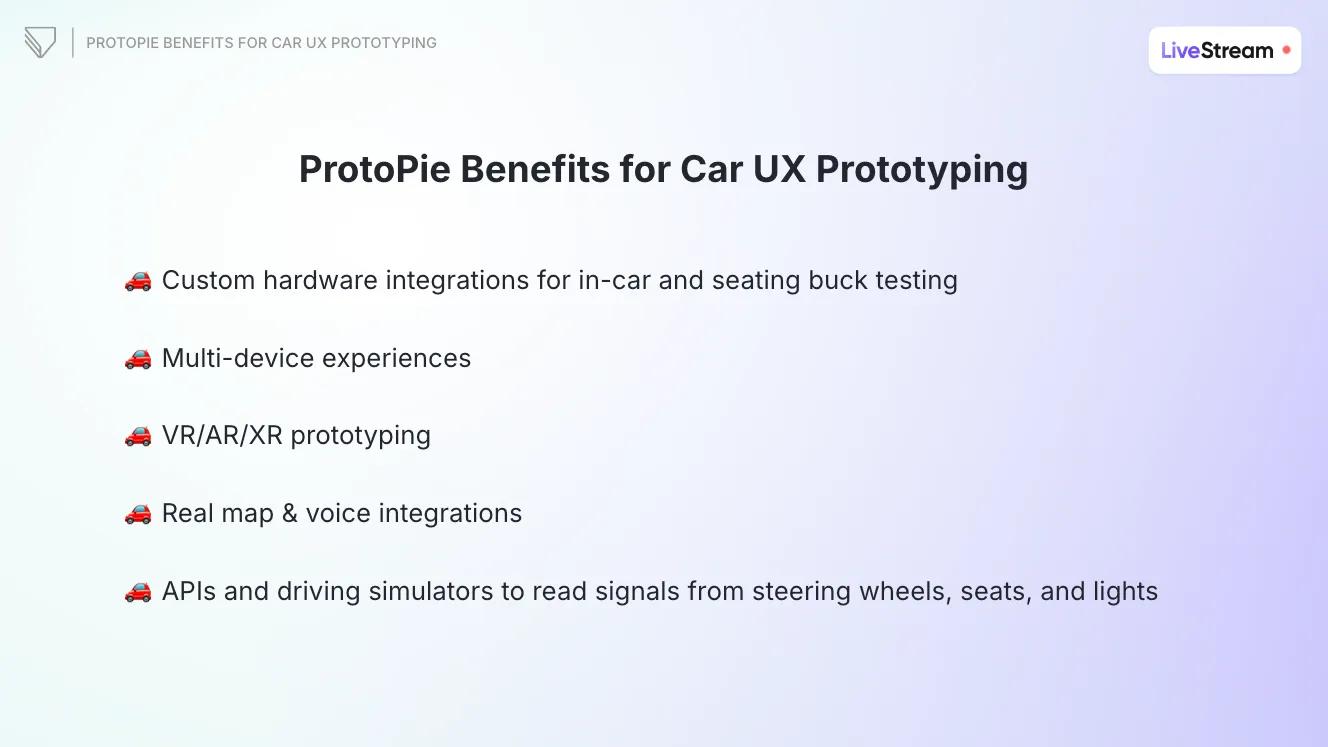
Innovating the future of HMI design with ProtoPie
ProtoPie is pivotal in Granstudio’s design process, offering a powerful and flexible platform for creating dynamic, responsive HMI prototypes. By enabling real-time interaction testing, integrating with external devices, and supporting advanced features like voice commands, ProtoPie fits seamlessly into Granstudio’s workflow.
With ProtoPie, Granstudio can push the boundaries of automotive HMI design, creating the seamless car experiences of the future.
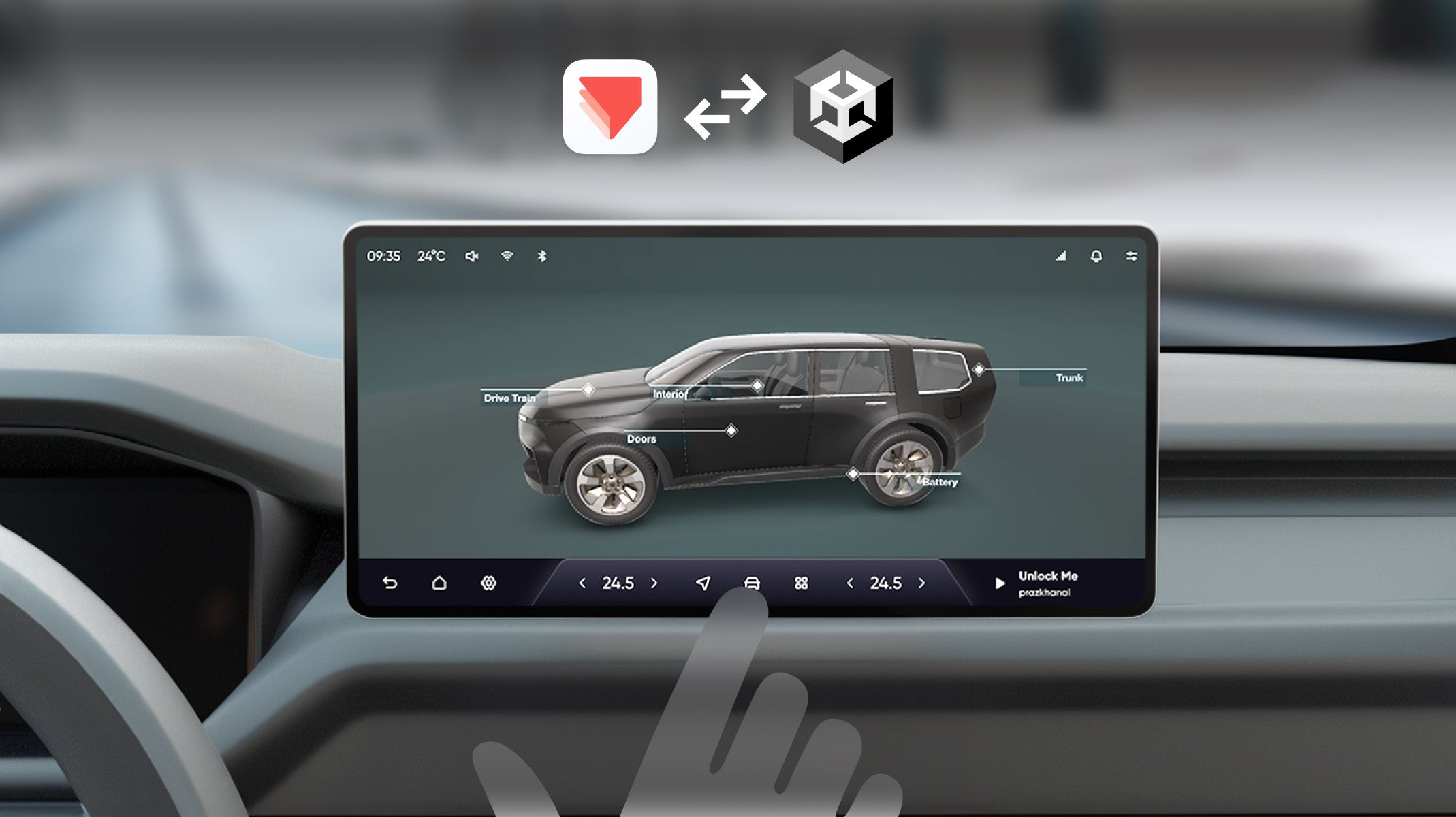.jpg)
